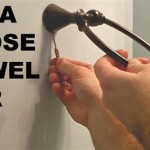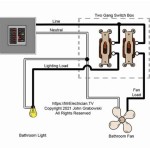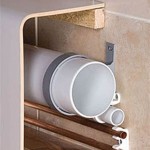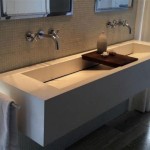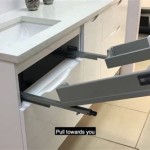Can You Vent A Bathroom Fan Into The Soffit? Exploring the Proper Ventilation Methods
The question of whether a bathroom fan can be vented into the soffit is a frequently debated topic among homeowners and construction professionals. The answer is unequivocally no, it is not appropriate or advisable to vent a bathroom fan into the soffit. This practice can lead to a range of problems, impacting the integrity of the house and potentially creating unhealthy living conditions. Understanding the reasons behind this prohibition and exploring the correct ventilation methods is crucial for maintaining a healthy and structurally sound home.
The primary purpose of a bathroom fan is to remove moisture-laden air from the bathroom environment. This helps to prevent mold and mildew growth, which can thrive in damp conditions. Without adequate ventilation, excess humidity from showers, baths, and even handwashing can permeate walls, ceilings, and flooring, leading to structural damage and potential health issues. A properly installed ventilation system efficiently removes this moisture, directing it outside the home.
Soffits are typically designed to provide intake ventilation for the attic space. The vents allow cool, dry air to enter the attic, which helps to regulate temperature and prevent moisture buildup in the attic. When a bathroom fan is vented into this area, it disrupts this airflow and introduces moist, warm air into the soffit and, subsequently, the attic. This creates an environment conducive to mold growth, wood rot, and other moisture-related problems.
Why Venting into the Soffit is Detrimental
There are several key reasons why venting a bathroom fan into the soffit is considered a poor and even hazardous practice:
1. Moisture Accumulation: The primary problem with venting into the soffit is the introduction of warm, moist air into a space that is meant to be dry. This moisture condenses on cooler surfaces, such as the underside of the roof sheathing and the attic insulation. Over time, this condensation can lead to mold and mildew growth, causing significant damage to the roof structure and potentially affecting indoor air quality.
2. Insulation Degradation: The moisture from the bathroom exhaust can saturate attic insulation, reducing its effectiveness. Wet insulation loses its R-value, meaning it no longer provides adequate thermal protection. This can lead to higher heating and cooling costs, as the home becomes less energy-efficient. Furthermore, wet insulation can become a breeding ground for mold and attract pests.
3. Wood Rot and Structural Damage: Prolonged exposure to moisture can cause wood rot in the roof structure, including the rafters, trusses, and sheathing. This can weaken the structural integrity of the roof, potentially leading to costly repairs or even roof collapse in severe cases. The soffit itself is typically constructed of wood or other materials susceptible to rot when exposed to excessive moisture.
4. Ice Dam Formation: In colder climates, warm, moist air vented into the attic can contribute to ice dam formation. Warm air escaping from the house melts snow on the roof, which then refreezes at the eaves, forming a dam of ice. This dam prevents melting snow from draining properly, causing water to back up under the shingles and potentially leak into the house. Venting into the soffit exacerbates this problem by increasing the amount of warm, moist air entering the attic.
5. Violation of Building Codes: Many building codes explicitly prohibit venting bathroom fans into the soffit. These codes are in place to protect the health and safety of occupants and to prevent damage to the building structure. Violating building codes can result in fines and require costly remediation to correct the problem.
6. Pest Attraction: Moist environments attract pests such as insects and rodents. Venting bathroom air into the soffit can create a welcoming habitat for these creatures, leading to infestations in the attic and potentially within the walls of the home. These pests can cause further damage to the structure and contaminate insulation and other materials.
Proper Ventilation Methods for Bathroom Fans
Given the problems associated with venting into the soffit, it is essential to understand and implement proper ventilation methods for bathroom fans. The goal is to exhaust moist air directly outside the home, away from the attic and other vulnerable areas. Here are the recommended approaches:
1. Venting Through the Roof: One of the most effective methods is to vent the fan through the roof using a dedicated roof vent. This involves installing a duct that runs from the fan to a vent cap installed on the roof. The vent cap should be designed to prevent rain, snow, and pests from entering the duct. This method provides a direct path for the exhaust air to escape the house.
2. Venting Through an Exterior Wall: Another common method is to vent the fan through an exterior wall. This involves running a duct from the fan to a vent cap installed on the exterior wall. The vent cap should be located away from windows, doors, and air conditioning units to prevent the moist air from being drawn back into the house. It is also important to ensure that the vent cap is properly sealed to prevent air leaks and water intrusion.
3. Using Insulated Ductwork: Regardless of the chosen venting method, it is crucial to use insulated ductwork. Insulated ducts help to prevent condensation inside the duct, which can occur when warm, moist air travels through a cold duct. Condensation inside the duct can lead to mold growth and reduce the efficiency of the ventilation system. Insulated ducts also help to reduce noise from the fan motor.
Key Considerations for Installation
Proper installation is just as important as choosing the correct venting method. Here are some key considerations for installing a bathroom fan ventilation system:
1. Ductwork Slope: The ductwork should be installed with a slight slope downward towards the exterior vent. This allows any condensation that forms inside the duct to drain out, preventing it from accumulating and causing problems.
2. Sealing Duct Connections: All duct connections should be properly sealed with duct tape or mastic to prevent air leaks. Air leaks can reduce the efficiency of the ventilation system and allow moist air to escape into the attic or other areas of the house.
3. Proper Vent Cap: The vent cap should be designed to prevent backdrafting, which can occur when wind blows air back down the duct into the bathroom. The vent cap should also be equipped with a screen to prevent pests from entering the duct.
4. Short and Straight Duct Runs: The duct run should be as short and straight as possible to minimize air resistance. Long, convoluted duct runs can reduce the effectiveness of the fan and increase energy consumption.
5. Professional Installation: If unsure about any aspect of the installation process, it is best to hire a qualified professional. A professional can ensure that the ventilation system is installed correctly and that it meets all applicable building codes. Professional installation is especially important for complex installations, such as those involving roof penetrations.
6. Fan Sizing: Selecting the right size fan for the bathroom is crucial for effective ventilation. The appropriate fan size is determined by the square footage of the bathroom. A general rule of thumb is to provide at least 1 CFM (cubic feet per minute) of airflow per square foot of bathroom space. For example, a bathroom that is 50 square feet would require a fan with a CFM rating of at least 50. Bathrooms with high ceilings or those used frequently may require even larger fans.
7. Maintenance: Regular maintenance is essential to keep the bathroom fan ventilation system operating at peak performance. This includes cleaning the fan blades and housing regularly to remove dust and debris. It is also important to inspect the ductwork and vent cap periodically for any signs of damage or blockage. Addressing any issues promptly can prevent more serious problems from developing.
In summary, venting a bathroom fan into the soffit is a detrimental practice that can lead to moisture accumulation, insulation degradation, wood rot, ice dam formation, building code violations, and pest attraction. Proper ventilation methods, such as venting through the roof or an exterior wall, combined with insulated ductwork and careful installation practices, are essential for maintaining a healthy and structurally sound home.

Adding A Bathroom Fan Fine Homebuilding

Everbilt 4 In To 6 Soffit Exhaust Vent Sevhd The Home Depot

Can Your Bathroom Fan Vent Into The Attic Or Soffit Beantown Home Improvements Inc

Venting A Bath Fan In Cold Climate Fine Homebuilding

Bathroom Venting Through Soffit Greenbuildingadvisor

Do Your Exhaust Vents Terminate At Soffits Charles Buell Consulting Llc

Soffit Bath Fan Ventilation Exterior Inspections Internachi Forum

Choosing The Right Vent Cap For A Soffit Primexvents

Pin On Home Design

Home Moisture Flow Soffit Vent
Related Posts

